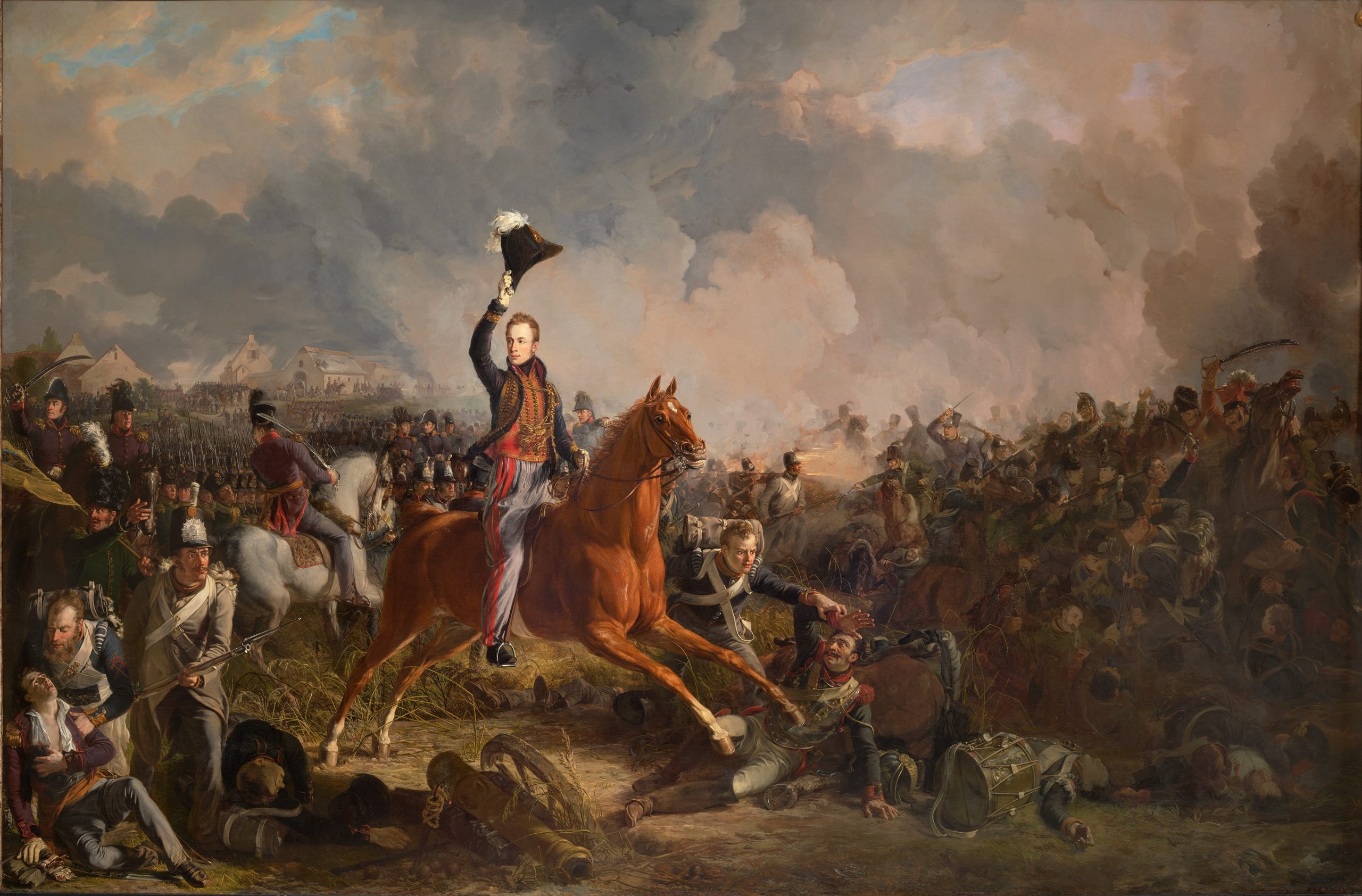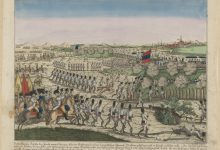The Battle of Quatre Bras (1815): A Pivotal Clash in the Napoleonic Wars
The Battle of Quatre Bras, fought on June 16, 1815, was one of the key engagements of the Napoleonic Wars, playing a critical role in shaping the events that led to Napoleon Bonaparte’s ultimate defeat at Waterloo just two days later. This battle, involving the forces of Napoleon’s French army and the combined forces of the United Kingdom and Prussia, was fought near the crossroads village of Quatre Bras in present-day Belgium. Though not as well-known as the larger and more decisive Battle of Waterloo, Quatre Bras had significant strategic consequences that contributed to the ultimate fall of the French Empire.
The Strategic Importance of Quatre Bras
Quatre Bras, located in the southern part of the Kingdom of the Netherlands (modern-day Belgium), was of immense strategic significance due to its position at the crossroads of roads leading to Brussels, Charleroi, and Namur. For Napoleon, controlling these roads was essential for coordinating his movements and ensuring his supply lines remained intact. Conversely, for the Anglo-Allied forces under the command of the Duke of Wellington and the Prussian army led by Gebhard Leberecht von Blücher, holding Quatre Bras was vital in preventing Napoleon from advancing on Brussels and maintaining their combined defense.
The outcome of the battle would directly impact the subsequent engagements and eventually influence the fate of the Napoleonic Wars.
Prelude to Battle: The Movement of Forces
The events leading to the Battle of Quatre Bras began in the days following Napoleon’s return from exile on the island of Elba in March 1815. The Allies, who had previously defeated Napoleon in 1814 and forced his abdication, quickly mobilized to meet the threat of his return to power. The Duke of Wellington, leading the British forces, and Blücher, commanding the Prussian army, formed a strong alliance to oppose Napoleon’s renewed ambitions. Both generals recognized the necessity of stopping Napoleon before he could divide their forces or conquer key positions.
On June 15, Napoleon moved his army toward the region, seeking to outmaneuver the Allied forces. His primary objective was to strike a decisive blow before the Allies could unite. The French forces, with their superior numbers, moved rapidly across the countryside, and Napoleon hoped to defeat Wellington’s forces at Quatre Bras, preventing them from reinforcing Blücher’s position at Ligny, which was under threat from French forces under Marshal Ney.
The Forces Engaged
The forces at Quatre Bras were relatively modest compared to the later battles of the campaign, such as Waterloo. However, both sides were highly motivated, and the commanders were among the most experienced in European military history.
The British and Allied forces consisted primarily of British, Dutch, Belgian, and German troops, totaling approximately 30,000 men. Wellington, as the commander of the Anglo-Allied army, had a significant tactical advantage in terms of leadership but faced the challenge of defending an exposed position against a superior French force. Napoleon, having amassed around 33,000 men under the command of Marshal Ney, sought to drive the Allies from their position and break through their lines to advance toward Brussels.
The Prussians, under Blücher’s command, were positioned to the south of Quatre Bras, and it was essential for them to hold their ground and assist Wellington’s army in securing the crossroads. Both sides knew that the outcome of the battle would have broader implications for the rest of the campaign.
The Battle Unfolds
The battle itself was fiercely contested, with both sides launching numerous attacks throughout the day. The French troops, led by Marshal Ney, initially pushed the British defenders back, making significant progress early on. The Anglo-Allied forces, though outnumbered, put up stiff resistance, taking advantage of their position near the crossroads. The British infantry, bolstered by Belgian and Dutch forces, fought bravely to hold their ground against French artillery and cavalry.
Wellington, known for his caution and defensive expertise, focused on maintaining a strong defensive position while waiting for reinforcements. Blücher’s Prussian forces, however, were slower to arrive. Despite this delay, their eventual arrival on the battlefield provided crucial support to the beleaguered Anglo-Allied forces. The presence of the Prussian army turned the tide of the battle, as the French, stretched thin and unable to fully secure the crossroads, began to retreat.
The battle lasted throughout the day, with neither side gaining a decisive victory. However, the tactical draw achieved by the Allies, combined with the timely arrival of Prussian reinforcements, was a strategic success for Wellington and Blücher. Though the French forces remained in the field, they had failed to dislodge the Allies from Quatre Bras or achieve their intended goal of isolating them from one another.
Casualties and Aftermath
The Battle of Quatre Bras was a bloody affair, with heavy casualties on both sides. The French suffered approximately 4,000 casualties, while the Anglo-Allied forces incurred about 3,000 casualties. Despite the high number of losses, the outcome of the battle demonstrated that the French were not invincible, and the resilience of the Anglo-Allied and Prussian forces was a crucial morale boost.
In the broader context of the 1815 campaign, the Battle of Quatre Bras was part of the series of engagements that ultimately led to Napoleon’s defeat at Waterloo on June 18, 1815. While Quatre Bras did not produce a clear victor, it significantly delayed Napoleon’s ability to achieve his objectives, buying crucial time for the Allies to unite and confront him at Waterloo.
The Significance of Quatre Bras
Although overshadowed by the more famous Battle of Waterloo, the Battle of Quatre Bras remains a significant moment in the Napoleonic Wars. It was a battle of attrition, with both sides suffering heavy casualties. However, the tactical draw achieved by Wellington and Blücher at Quatre Bras contributed directly to their success at Waterloo.
The battle was also indicative of the cooperation between the British and Prussian forces, which would prove vital in the final defeat of Napoleon. Despite their differences in command structure and military culture, Wellington and Blücher’s ability to coordinate their forces effectively in the face of Napoleon’s aggression marked the beginning of the end for the French Empire.
Moreover, the battle highlighted the importance of the Prussian involvement in the campaign. While Napoleon had hoped to divide the Allied forces, the resilience of the Prussians at Quatre Bras and their subsequent arrival at Waterloo played a pivotal role in his downfall. Blücher’s timely intervention ensured that the French could not achieve a decisive breakthrough, and the pressure exerted on Napoleon’s forces ultimately led to their defeat.
Conclusion
The Battle of Quatre Bras, while not as well-known as some of the other battles of the Napoleonic Wars, was a key turning point in the campaign of 1815. The battle prevented Napoleon from splitting the Allied forces and buying time for the united British and Prussian armies to ultimately defeat him at Waterloo. Although it did not result in a clear victory for either side, the battle showcased the strategic importance of cooperation between Allied forces, the resilience of the British and Prussians, and the significance of timely reinforcements.
As a result, Quatre Bras remains an essential part of the historical narrative of the Napoleonic Wars and continues to be studied for its lessons in military strategy, leadership, and international cooperation. The Battle of Quatre Bras, though often overlooked, played a crucial role in determining the fate of Europe and the end of one of the most turbulent eras in European history.

